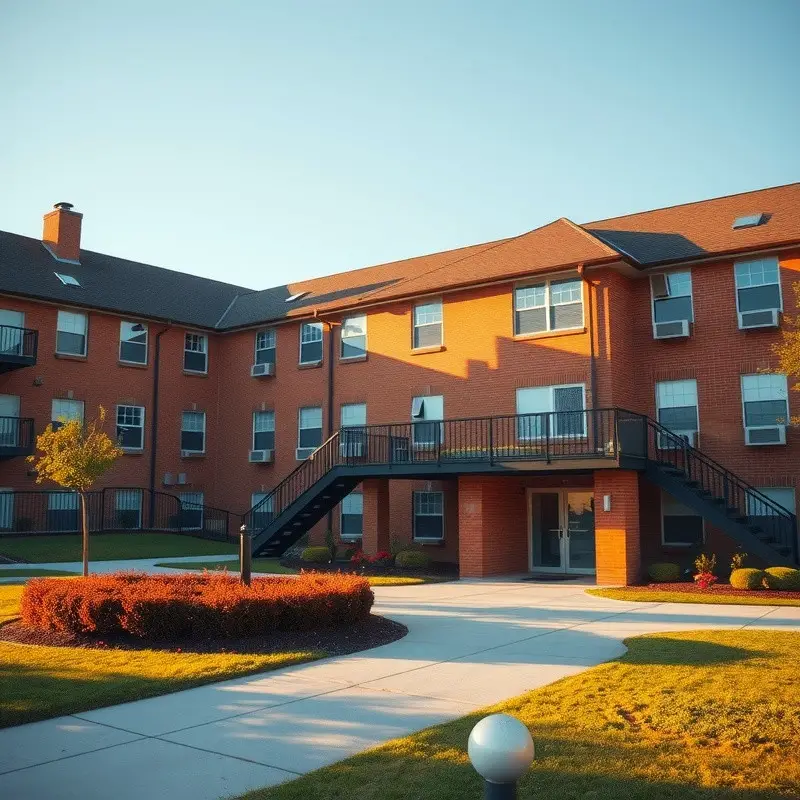What Is Affordable Housing for Seniors?
Affordable housing for seniors refers to rental or ownership opportunities designed specifically for older adults, typically aged 55 or 62 and older, that are available at below-market rates. These housing solutions prioritize:
- Affordability: Rent or ownership costs should not exceed 30% of a senior’s monthly income.
- Accessibility: Units often include features like ramps, handrails, elevators, and emergency call systems.
- Supportive Services: Some offer social activities, meal plans, transportation, and health support.
Types of Affordable Senior Housing
1. Public Housing for Seniors
Operated by local Public Housing Authorities (PHAs), public housing offers low-cost apartments to eligible seniors based on income.
- Eligibility: Typically for individuals over 62 with income below 80% of area median income (AMI)
- Cost: Rent is generally capped at 30% of income
- Application: Apply through your local PHA
📌 Find your local PHA at HUD.gov
2. Section 202 Supportive Housing Program
This HUD-funded program provides housing with supportive services, such as housekeeping, meals, and transportation.
- Eligibility: 62+ with very low income (below 50% AMI)
- Key Feature: On-site services for independent living
3. Low-Income Housing Tax Credit (LIHTC) Properties
Private developers receive tax incentives to offer below-market rent to low-income tenants, including seniors.
- Availability: Units reserved for seniors in mixed-income developments
- Cost: Varies, but generally well below market rates
- Note: No direct subsidy to tenants; rent based on area income
4. Section 8 Housing Choice Vouchers
Vouchers allow seniors to rent in the private market, with the government covering part of the rent.
- Eligibility: Income below 50% AMI
- Flexibility: Seniors can choose where to live
- Waitlists: Can be long; early application is recommended
5. Senior Co-Housing or Shared Housing Models
Involves multiple seniors living together to share expenses and companionship.
- Benefits: Affordable and community-based
- Ideal For: Active seniors seeking a social environment
Who Qualifies for Affordable Senior Housing?
Eligibility varies by program, but common requirements include:
- Age: Typically 55+ or 62+, depending on the program
- Income: Must fall within low or very low income brackets defined by HUD
- Residency or Citizenship Status: Legal U.S. resident or citizen
- Independence: Must be able to live independently, unless in assisted living
How to Apply for Senior Housing
- Research Available Programs: Visit HUD, state, or local housing authority websites
- Gather Documentation: Proof of income, identification, Social Security number, tax returns
- Apply to Multiple Waitlists: Increase your chances by applying to several programs
- Follow Up Regularly: Waitlists may move slowly—check your status periodically
Tips for a Successful Application:
- Double-check all forms for accuracy
- Submit complete documents to avoid delays
- Keep copies of everything
Financial Assistance & Support Programs
1. Supplemental Security Income (SSI)
Monthly payments for seniors with low income/assets to help with housing and other basic needs.
2. Medicaid Waivers
Helps cover in-home care services, making it easier for seniors to remain in their housing.
3. State and Local Programs
Some states offer rent subsidies, utility assistance, or property tax relief for seniors.
✅ Example: California’s Senior Citizens Property Tax Postponement Program
Benefits of Affordable Housing for Seniors
1. Financial Security
Reduced housing costs allow seniors to allocate funds to health care, food, and other needs.
2. Improved Health & Safety
Age-appropriate designs and access to care help reduce hospital visits and accidents.
3. Social Connection
Many senior housing communities offer social activities that combat loneliness and isolation.
4. Peace of Mind for Families
Knowing their loved ones are in a safe, supported environment eases stress for family members.
Real-Life Example: How Affordable Housing Changed One Senior’s Life
Meet Margaret, 74: After losing her husband, Margaret found herself living on a limited income. She struggled to afford her apartment in a city with rising rents. After applying for Section 202 housing, she moved into a subsidized senior living complex where she now pays just $300/month. With on-site transportation, group dinners, and wellness checks, Margaret regained her independence and found a new social circle.
Common Challenges & How to Overcome Them
1. Long Waitlists
- Solution: Apply early, stay on multiple lists, and check status regularly
2. Limited Awareness
- Solution: Use local senior centers or Area Agencies on Aging for guidance
3. Digital Divide
- Solution: Ask for paper applications or assistance from community organizations
Final Thoughts: Planning Ahead Is Key
Finding affordable housing for seniors doesn’t have to be overwhelming. The earlier you start exploring options, the more choices you’ll have. By understanding available programs, knowing where to look, and preparing documentation in advance, seniors and their families can secure stable, dignified, and enriching living environments.

